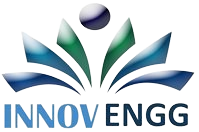In the pursuit of sustainable energy solutions, the spotlight is increasingly turning to green hydrogen as a key player in the race to decarbonize our world. At the heart of green hydrogen production lies electrolysis, a process that has undergone significant innovations in recent years. In this comprehensive blog, we delve into the cutting-edge advancements reshaping electrolysis and driving the evolution of green hydrogen production.
The Foundation: Understanding Electrolysis
Before diving into the innovations, it’s crucial to grasp the fundamentals. Electrolysis is a process that utilizes an electric current to split water molecules into hydrogen and oxygen. When powered by renewable energy sources, this process yields green hydrogen – a clean and sustainable fuel with immense potential to revolutionize our energy landscape.
1. High-Efficiency Electrolyzers:
Recent breakthroughs in materials science and engineering have led to the development of high-efficiency electrolyzers, crucial components in the electrolysis process. These advancements significantly improve the overall performance of electrolysis by enhancing catalytic activity, optimizing system designs, and reducing energy consumption.
Cutting-edge catalyst materials, such as nanostructured metals and metal alloys, enhance the efficiency of the hydrogen evolution reaction (HER) and oxygen evolution reaction (OER) at the electrodes. This translates to faster reaction rates and lower overpotential, making electrolysis more energy-efficient.
2. Proton Exchange Membrane (PEM) Electrolysis:
PEM electrolysis has gained prominence due to its ability to operate at higher temperatures and pressures compared to traditional alkaline electrolysis. The membrane in PEM electrolyzers allows for the selective transport of protons, resulting in improved efficiency and faster reaction kinetics.
Recent innovations in PEM electrolysis include the development of advanced membrane materials, such as ion-conductive polymers, and optimized electrode structures. These improvements contribute to the durability and performance of PEM electrolyzers, making them increasingly competitive in the green hydrogen landscape.
3. Solid Oxide Electrolysis Cells (SOEC):
SOEC technology represents a paradigm shift in electrolysis, operating at high temperatures and enabling the direct conversion of steam into hydrogen and oxygen. This approach not only enhances efficiency but also allows for the utilization of waste heat from other industrial processes, creating a more integrated and sustainable energy system.
Innovations in SOEC involve the use of advanced ceramic materials for electrolyte and electrode components, improving durability and overall cell performance. The high-temperature operation of SOECs is particularly advantageous for industrial applications seeking process heat in addition to hydrogen production.
4. Alkaline Electrolyzers:
Alkaline electrolyzers have undergone significant advancements, making them more cost-effective and suitable for large-scale applications. Innovations in electrode materials, such as nickel-based alloys, and the optimization of cell designs contribute to increased durability and efficiency in alkaline electrolysis.
These improvements position alkaline electrolyzers as competitive alternatives, especially in scenarios where large-scale, continuous hydrogen production is required. The scalability and reliability of alkaline electrolysis make it a key player in the growing demand for green hydrogen.
5. Decentralized and Modular Systems:
The shift towards decentralized and modular electrolysis systems is reshaping the landscape of green hydrogen production. Smaller, scalable units offer flexibility in deployment, allowing businesses to adapt electrolysis systems to their specific energy needs.
Innovations in modular electrolysis systems involve the development of compact and efficient units that can be easily integrated into existing infrastructure. This approach not only streamlines the deployment process but also facilitates the widespread adoption of green hydrogen across various industries.
Benefits and Implications:
1. Cost Reduction:
One of the primary benefits of these innovations is the ongoing reduction in the production costs of green hydrogen. As electrolysis technologies advance and economies of scale are realized, the cost competitiveness of green hydrogen continues to improve. This is a crucial factor in accelerating its adoption across industries.
2. Scalability:
The innovations in electrolysis technology facilitate the scalability of green hydrogen production. Whether for large industrial applications or smaller, decentralized systems, the ability to scale production according to demand enhances the versatility and accessibility of green hydrogen.
3. Integration with Renewable Energy:
Advanced electrolysis technologies seamlessly integrate with renewable energy sources, addressing the intermittency and variability associated with solar and wind power. The flexibility of these systems to adapt to fluctuating renewable energy inputs enhances the reliability and sustainability of green hydrogen production.
Conclusion:
The innovations in electrolysis are propelling the green hydrogen revolution to unprecedented heights. As we witness these advancements, the promise of cost-effective, efficient, and scalable green hydrogen production becomes increasingly attainable. The ongoing evolution of electrolysis technologies not only signifies a transformative era in energy production but also underscores our collective commitment to building a cleaner, more sustainable future. The journey towards a hydrogen-powered world is illuminated by the brilliance of innovation, and the horizon is ablaze with possibilities. As we continue to push the boundaries of what is technologically feasible, the era of green hydrogen beckons, offering a beacon of hope for a sustainable and carbon-neutral tomorrow.
If you have any sort of inquiry feel free to utilize the 30 minutes Free Consultation that can be booked by email sales@innovengg.com.au.
